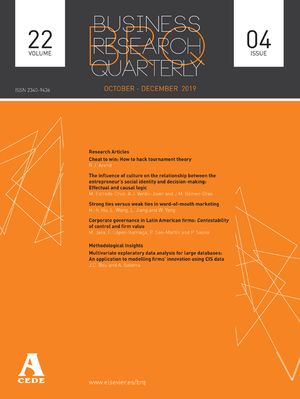Debido a la escasa investigación existente que haya abordado de forma conjunta los temas de la empresa familiar y la internacionalización, este trabajo pretende aportar nueva evidencia empírica acerca de la influencia de los factores de carácter familiar sobre el compromiso internacional de estas empresas. Los resultados obtenidos muestran que, para las empresas familiares españolas, una mayor visión a largo plazo y la presencia de directivos no familiares se relacionan positivamente con modos de entrada que implican un mayor compromiso internacional. La importancia de los fondos de la familia ante la expansión internacional, por el contrario, limita este compromiso.
Studies combining family business and internationalization theories are scarce. In order to bridge this gap, this paper has as its aim to study those family factors that seem to have an impact on the international commitment of these companies. From a sample of Spanish family firms, our results show that long-term vision and the presence of nonfamily managers are positively related to foreign entry modes involving higher international commitment. On the other hand, the importance of family financial funds before international expansion limits this commitment.




